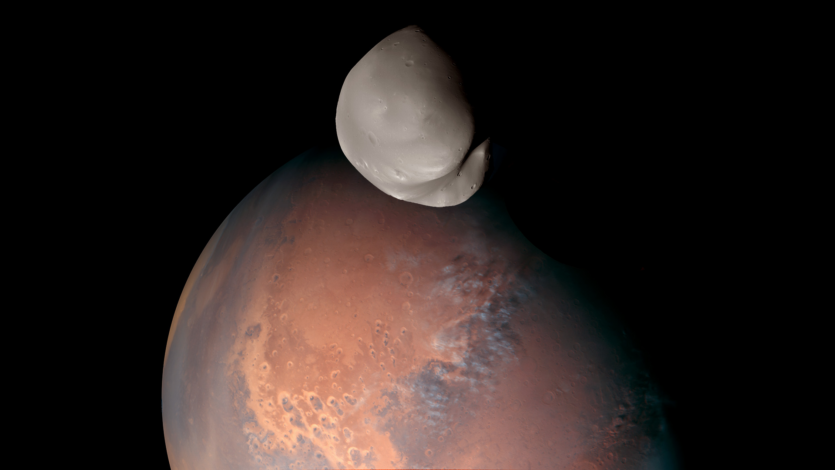
NASA’s Mars rover Perseverance has taken a rare photo of the tiny moon Deimos at dawn.
It is noted that on March 1 this year, at 4:27 a.m. local time, Perseverance photographed the glow from the smaller of the two satellites of the Red Planet Deimos. The rover used the left navigation camera to create long exposure shots, about 3.28 seconds. In total, the NASA rover took 16 frames, which were combined into a single image. The final photo has a 52-second shutter speed.
Deimos is a smaller and more distant moon of Mars compared to Phobos. It was discovered in 1877 by American astronomer Asaph Hall. Deimos is no more than 12 km wide. This makes it one of the smallest satellites in the solar system.
The shape of Deimos is more like an asteroid. According to scientists, it could be an asteroid that was captured by Martian gravity It rotates at an altitude of about 23,500 km above on the surface of Mars and makes a full turnover in about 30 hours.
Due to low light conditions, the photo contains some haze and digital noise. Most of the white spots in the sky are probably artifacts, but some may be rays of light. Two of the brightest points in the image are real stars, Regulus and Algieba, both from the constellation Leo.

Approximately 750 meters from the rover is «Woodstock Crater». At the time, Perseverance was headed for a place called «Hazel’s Witch Hill».
The main task of Perseverance on Mars is to search for ancient signs of life. To achieve this goal, the rover is studying the geology and climate of the Red Planet in the past, helping scientists understand the planet’s history and its potential habitability.
Perseverance is the first mission to collect and store samples of Martian rock and soil, which will be stored in sealed containers. These samples are intended for later retrieval and return to Earth as part of the sample return program.
This mission is a central part of NASA’s Mars exploration program and its broader «Moon-Mars» strategy, which includes Artemis missions to the Moon as stepping stones to future human exploration of Mars.
The first ever photo of the aurora borealis on Mars that can be seen with the naked eye
Source: SciTechDaily

Spelling error report
The following text will be sent to our editors: